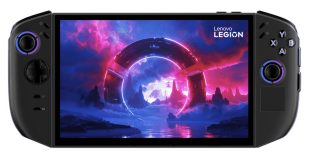We have changed our method of measuring noise levels. We have built a system inside a Lian Li chassis with no case fans and have used a fanless cooler on our CPU. We are using a heatpipe based passive power supply and an Intel SSD to keep noise levels to a minimum. The motherboard is also passively cooled. This gives us a build with completely passive cooling and it means we can measure noise of just the graphics card inside the system when we run the tests.
Ambient noise in the room is around 20-25dBa. We measure from a distance of around 1 meter from the closed chassis and 4 foot from the ground to mirror a real world situation.
Why do this? Well this means we can eliminate secondary noise pollution in the test room and concentrate on only the video card. It also brings us slightly closer to industry standards, such as DIN 45635.
KitGuru noise guide
10dBA – Normal Breathing/Rustling Leaves
20-25dBA – Whisper
30dBA – High Quality Computer fan
40dBA – A Bubbling Brook, or a Refridgerator
50dBA – Normal Conversation
60dBA – Laughter
70dBA – Vacuum Cleaner or Hairdryer
80dBA – City Traffic or a Garbage Disposal
90dBA – Motorcycle or Lawnmower
100dBA – MP3 player at maximum output
110dBA – Orchestra
120dBA – Front row rock concert/Jet Engine
130dBA – Threshold of Pain
140dBA – Military Jet takeoff/Gunshot (close range)
160dBA – Instant Perforation of eardrum
The VTX3D HD7870 EyeFinity 6 cooler is slightly quieter than the reference card, although the fan noise is noticeable, even above a couple of chassis fans. I do feel VTX3D would have had more success with a two fan cooler implementation, subsequently spinning slower. It seems an unusual and rather shortsighted decision for a high end £300 video card.
When idle, the fan spins at a low 1,100 rpm, but this quickly rises to 2,300 rpm when gaming. Under Furmark load it increases further, to over 2,500 rpm.
 KitGuru KitGuru.net – Tech News | Hardware News | Hardware Reviews | IOS | Mobile | Gaming | Graphics Cards
KitGuru KitGuru.net – Tech News | Hardware News | Hardware Reviews | IOS | Mobile | Gaming | Graphics Cards





Its a great idea for multiple monitors, but it seems like a half way approach.
people who want this for business, wont need a 7870, so its overkill as they wont game.
gamers who want 6 screen support would be better with a 7970 version as it has more power. then they could add another 7970 later for crossfire and added power.
Make sense or not? I think so anyway.
seems more suited to business users IMO. small design for business cases, single fan for people who dont really care about a little extra noise. not enough power for gaming on 4 screens or more etc.
I dont understand the selection. 7970 would make much more sense for this kind of card.
I think like Jeff, we need it for buisness and I don`t care much about the 3D support so 7750 with 6 outputs is good for me. I need PCIe 3.0 support, because I need fast 2D transfers over the bus.
Interesting card, currently the best you can have for Eyefinity in 7xxx series, unfortunately, as the two 7970 series who can run 6 screens have mixed outputs resulting in screen tearing, same for Sapphire 7950 FleX which is for a start limited to 1080p (bcos of HDMI) and on top of that has mixed outputs resulting screen tearing.
What someone should do would be a 7950 or 7970 with 6x DP. For business use one gets off the hook cheaper by going with either 6770 eyefinity 5 edition (like, from example, XFX does and which is on top of being small also a single slot card) or with 6870 Eyefinity 6 which is usually close to 100 euro cheaper and also has 2 Gb of vRAM.
Thanks a lot for sharing this with all people you actually recognise what you’re talking about! Bookmarked. Please also discuss with my web site =). We could have a link alternate arrangement between us